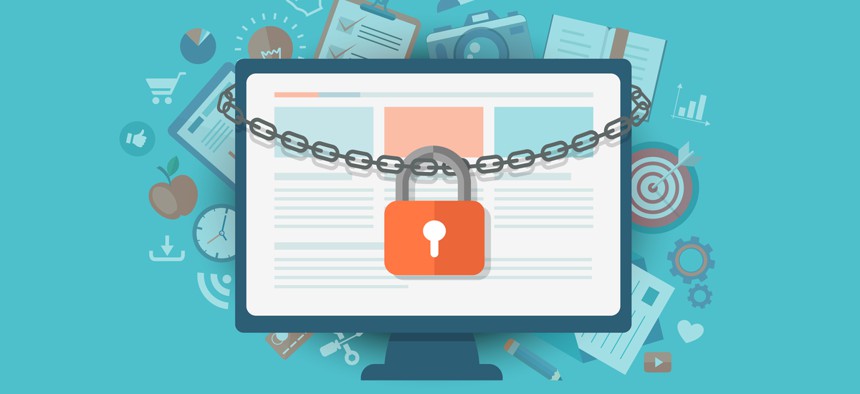What to Watch for in Federal Data Privacy Legislation

La1n/Shutterstock.com
A draft of a federal data privacy and security bill takes into consideration leading practices for the states and those abroad.
Over the past few years, individual states throughout the U.S. have attempted to formulate legislation to address consumer data privacy and security, but these efforts created a fragmented approach to consumer rights.
The 2018 California Consumer Privacy Act (CCPA) provides the most comprehensive state legislation, but many states have barely scratched the surface and tend to focus on breach notification. Since the inception of the European Union’s General Data Protection Regulation (GDPR), many countries have adopted similar approaches to provide covered entities a centralized governing body to ensure adherence and enforcement of the regulations. Although interpreting legislation can require organizations to tap into their legal counsel, this centralized approach provides far more clarity than the current state of U.S.-based data privacy and security legislation.
Finally!
At last, Sen. Jerry Moran, R-Kan., along with other representatives, has established initial drafts of the Consumer Data Privacy and Security Act (CDPSA) of 2020. This approach aims to fill a void around centralized governing of data privacy and security at the national level but also takes into consideration leading legislative practices for the states and those abroad. Although the CDPSA is in the early phases of development through the legislative process, we can see similarities and differences when compared to the data privacy and security leaders and influencers. Let’s take a brief look into key aspects of the legislation: preemption to existing state and federal laws, fines, and enforcement exemptions.
Cost vs. Enforcement of Compliance
Striking a balance between protecting consumer rights and reducing the cost of compliance for small- to mid-sized businesses is a key difference when comparing CDPSA to CCPA. The CDPSA draft defines small businesses as having fewer than 500 employees, less than $50 million average gross receipts over three years, and processing of personal data for fewer than 1 million individuals. On the other hand, CCPA has no employee thresholds, requires less than $25 million with no yearly average requirement, and no threshold for processing of personal data (individual count). Service providers should understand that they would be in-scope for CDPSA as well and should practice due diligence around the legislation.
Benefits of Centralized Law and Authority
One of the benefits CDPSA adopted from the EU’s GDPR is based on the effectiveness of a centralized governing body appointed to enforce and monitor adherence to the law. For CDPSA, the Federal Trade Commission (FTC) would serve as the lead authority. This would allow common legal understanding and expectations and moves away from the current fragmentation of state laws. Where CDPSA differs from GDPR is around the definition of “permissible purpose” where CDPSA tends to be broader and more pragmatic in the business sense.
Expressed Preemptions to/from State and Federal Law
As centralized, federal legislation, the aim of CDPSA is to apply expressed preemption of state laws, although there are some exceptions. State data protection laws are preempted (assuming no conflict with CDPSA) around data breach notification regulation; criminal and civil procedures; employment laws around protection of employee data; state laws protecting individuals from discrimination based on race, religion, sex, national origin, or other forms of classification; and legislation around fraud and public safety, for example. This is likely an area that could change as the FTC works with state legislative bodies.
At the federal level, about 10 existing federal laws—such as HIPPA, HITECH and COPPA—would be exempt from CDPSA as drafted. Consult your legal counsel for more information.
Removing the Private Right of Action
One final difference is that the FTC or state attorney general may bring civil enforcement of CDPSA or other regulations, thus removing the private right of action. This means individuals cannot bring civil cases against a covered entity or service provider. However, there must be penalties for non-compliance to create sticking power for the legislation. This civil penalty is calculated based on the number of individuals impacted by the violation multiplied by an amount not exceeding $42,530. There are also several other factors that will be considered when calculating the amount of civil penalty. Also, keep in mind that a civil case may not be on public record if an agreement is made around confidentially clauses, or if a settlement is made outside of court. This will be an interesting factor to consider for public awareness and knowledge of violations that may impact individuals.
A Much Needed Start
Though it’s still in the early phases, CDPSA is a solid and much-needed start to implementing centralized legislation to protect consumer data in the U.S. CDPSA appears to adopt best practices from data privacy leaders, such as GDPR and CCPA, and it also aims to take into consideration the overall cost of data privacy and security compliance for covered entities and service providers.
Bob Swanson is a compliance research consultant at Swimlane.
NEXT STORY: Gen Z Doesn’t Want to Work for the Government





